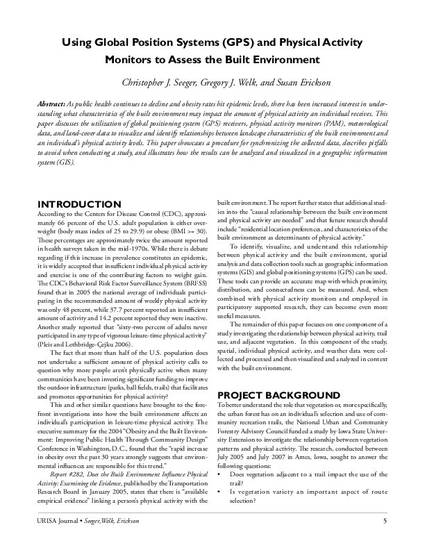
As public health continues to decline and obesity rates hit epidemic levels, there has been increased interest in understanding what characteristics of the built environment may impact the amount of physical activity an individual receives. This paper discusses the utilization of global positioning system (GPS) receivers, physical activity monitors (PAM), meteorological data, and land-cover data to visualize and identify relationships between landscape characteristics of the built environment and an individual’s physical activity levels. This paper showcases a procedure for synchronizing the collected data, describes pitfalls to avoid when conducting a study, and illustrates how the results can be analyzed and visualized in a geographic information system (GIS).
Iowa State University Extension and Outreach publications in the Iowa State University Digital Repository are made available for historical purposes only. Users are hereby notified that the content may be inaccurate, out of date, incomplete and/or may not meet the needs and requirements of the user. Users should make their own assessment of the information and whether it is suitable for their intended purpose. For current publications and information from Iowa State University Extension and Outreach, please visit http://www.extension.iastate.edu.
Available at: http://works.bepress.com/christopher-seeger/150/

This article is from URISA Journal, 20:2(2008); 5-13. Posted with permission.